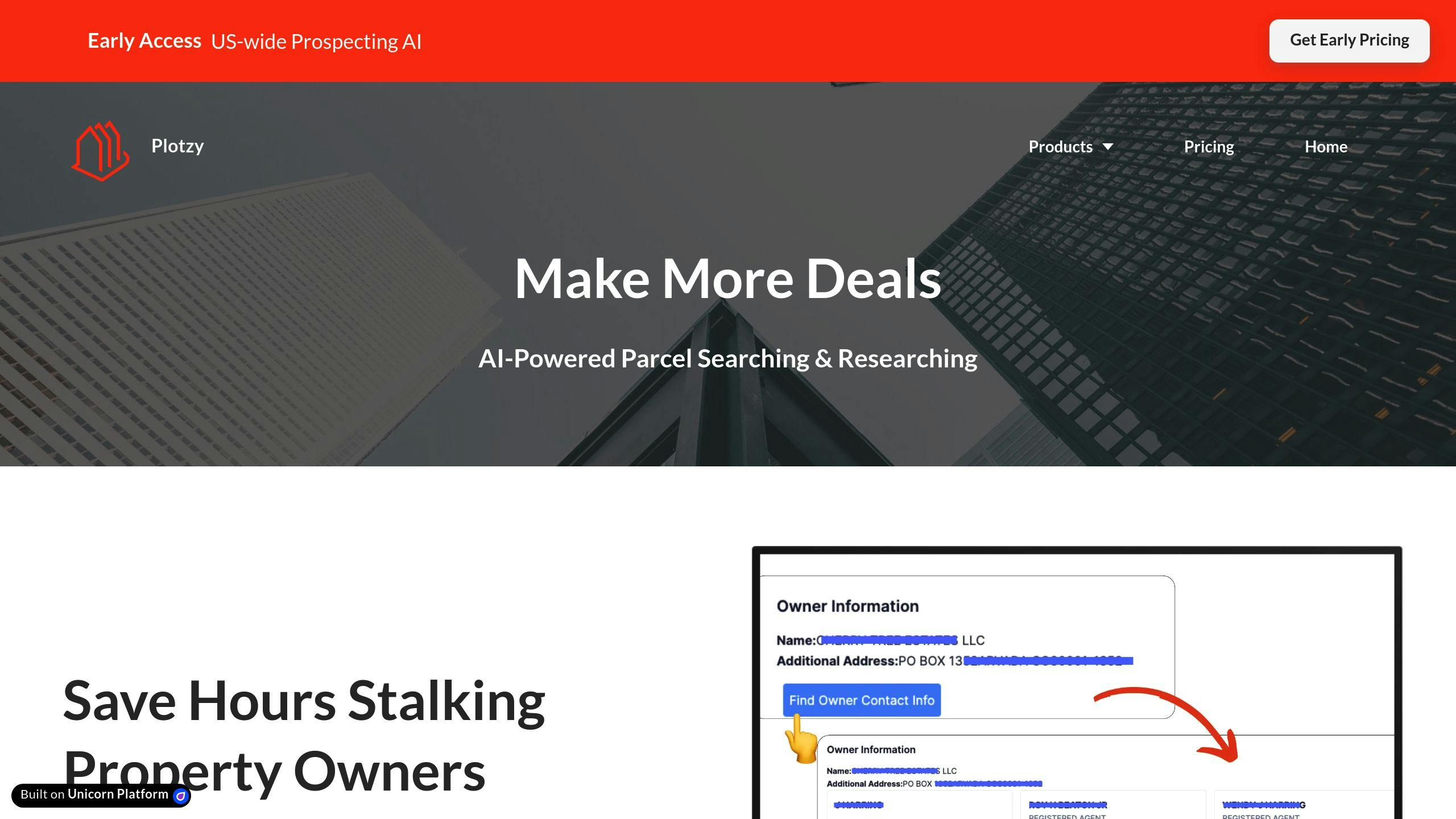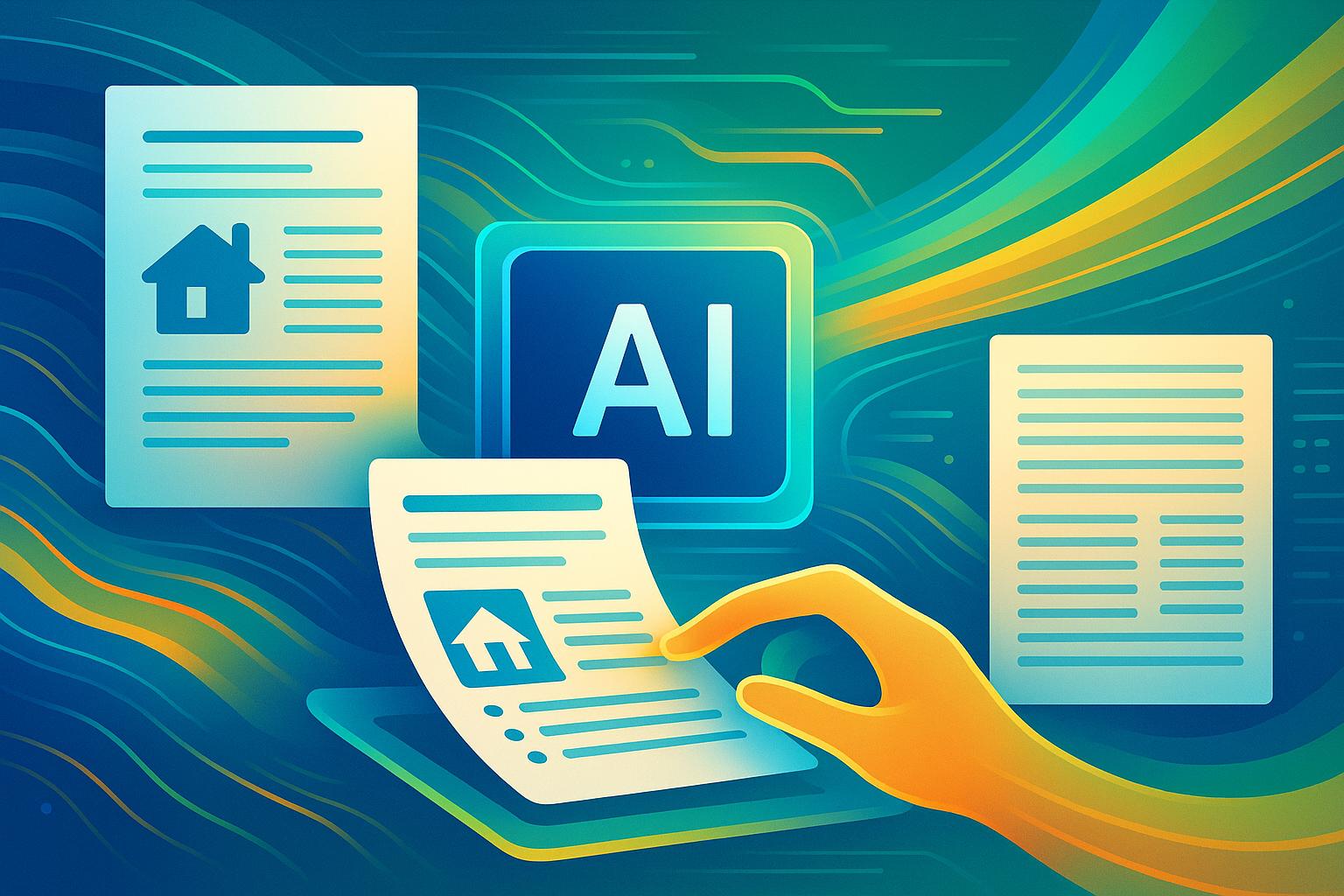AI is revolutionizing zoning analysis in real estate. Here's what you need to know:
- GIS + AI = faster, more accurate property searches and urban planning
- AI automates complex zoning code interpretation and predicts future city growth
- 60% of real estate pros still use outdated tech, creating opportunities for AI adoption
Key benefits of AI-powered zoning analysis:
| Benefit | Impact |
|---|---|
| Speed | Minutes vs. weeks for site selection |
| Accuracy | Reduced errors in development planning |
| Cost savings | Lower operational expenses |
| Smarter decisions | Data-driven insights for better choices |
To get started:
- Choose AI-friendly GIS software (e.g. ArcGIS Urban)
- Gather clean, organized zoning data
- Set up and train your AI model
- Test and verify results against official sources
While AI zoning tools are powerful, they're not perfect. Always double-check results and stay updated on the latest tech trends to stay competitive in real estate.
Related video from YouTube
Getting Started with GIS
Setting up a GIS system for AI-powered zoning analysis isn't as tough as it sounds. Here's how to get going:
Tools You'll Need
For GIS-based zoning analysis, you'll want:
| Tool Type | Examples | What It Does |
|---|---|---|
| GIS Software | ArcGIS, QGIS | Maps and analyzes spatial data |
| AI Integration | ArcGIS Urban | Adds AI to urban planning |
| Data Management | Geodatabases | Stores spatial data |
| Visualization | 3D Mapping Tools | Creates zoning maps you can interact with |
ArcGIS is great for big projects. It's packed with features for spatial analysis, 2D and 3D mapping, and more. On a budget? Try QGIS. It's free, easy to use, and works with lots of data types.
Want to add AI? Check out ArcGIS Urban. It helps you build different development scenarios and test zoning changes with interactive tools.
Finding Good Data
You can't do much without solid data. Here's where to look:
- Local Government Websites: Many cities and counties have their own GIS data. The City of New Orleans and Kentucky Geographic Network are good examples.
- State Resources: State GIS portals often have data for the whole state. Take a look at the Colorado Geospatial Portal.
- National Databases: The National Map offers pre-made GIS data, including stuff like government boundaries and structures.
- Regional Platforms: Places like AlabamaView and the Southern Alaska GIS Library focus on specific areas.
When you're gathering data, look for:
- Zoning maps
- Land use rules
- Property lines
- Environmental info
- Transportation networks
Adding AI to the Mix
Want to supercharge your analysis? Here's how to add AI to your GIS setup:
- Pick AI-Friendly Software: ArcGIS Urban works well with AI. You'll need a license and an ArcGIS Online account.
-
Set Up Your Model:
- Log into ArcGIS Online
- Create a new Urban app
- Use the US Default template to get started
-
Get Your Data Ready:
- Add your own maps and property data
- Find your location
- Pick layers from ArcGIS Online
- Double-check your data for accuracy
- Mark Your Planning Area: This is key for making plans with different building and space types.
-
Use AI Features:
- Analyze zoning patterns with machine learning
- Predict future zoning changes
- Let AI help interpret complex zoning rules
Pro Tip: Clean, organized data is crucial for AI. Take time to structure your GIS data well before you start using AI tools.
Using AI for Zoning Analysis
AI is changing how we do urban planning and real estate development. Here's how to use it for zoning analysis:
Getting Data Ready
Good data is key. Here's what to do:
- Clean It Up: Fix mistakes and make everything consistent.
- Organize It: Group similar data together.
- Map It Right: Make sure all your data points are in the right place on the map.
"Clean data is a must for AI in urban planning", says Nathan Robinson from Plotzy. "Bad data in means bad results out."
Picking an AI Model
Choose your AI model carefully. Think about:
- What you're trying to do
- How complex your data is
- How much computing power you have
- How easy it is to explain the results
CNNs work well for zoning analysis. They're good at understanding satellite images and figuring out how land is used.
Testing Your AI Model
Testing is crucial. Here's how:
- Split your data into three parts
- Train your model on one part
- Fine-tune it on another
- Test it on the last part
Don't just look at overall accuracy. It can be misleading.
A team led by Al-Ruzouq (2024) got 90.41% accuracy on a flood mapping project. This shows how powerful AI can be for zoning work.
Some tips:
- Use a confusion matrix to see where your model messes up
- Pay attention to less common zoning types
- Think about what mistakes would cost in the real world
sbb-itb-11d231f
Advanced GIS Tools
As AI and GIS technologies evolve, new tools are changing how we approach zoning analysis. Let's look at some cutting-edge features that are shaking up urban planning.
Finding Zone Borders with AI
AI-powered edge detection is changing the game for identifying zoning boundaries. It's faster and more accurate than doing it by hand.
Here's why AI boundary detection is a big deal:
- It chews through high-res images in no time
- It spots property lines with laser precision
- It cuts down on human slip-ups
Want to try it yourself? The ArcGIS API for Python has got you covered:
1. Export training data
First, use ArcGIS Pro to get your dataset ready.
2. Train the model
Fine-tune your model's learning rate. This step is key for solid performance.
3. Deploy the model
Apply your trained model to draw those boundaries.
Oakland, California put this tech to work. They used AI to read zoning codes and figure out max lot coverage and setbacks based on local rules.
Checking Zoning Rules
AI is making zoning compliance checks a breeze. What used to take hours of manual review can now be done in a snap.
Here's what AI brings to the table for zoning compliance:
- Lightning-fast checks on building designs
- Fewer mistakes in license applications
- Zoning rules applied more consistently
The Northern Kentucky Area Planning Commission jumped on this bandwagon. They automated land use cases for 20 towns, making it easier for everyone - even non-GIS folks - to access and use mapping services.
Working with Multiple Data Layers
Today's GIS tools are pros at juggling different types of zoning data at once. This gives us a fuller picture of our cities.
Here's a quick look at some key data layers:
| Data Layer | What It Shows | Why It Matters |
|---|---|---|
| Zoning maps | Current land use | Understand existing rules |
| Property lines | Parcel boundaries | See which properties are affected |
| Environmental data | Flood zones, soil types, etc. | Check environmental impact |
| Transportation networks | Roads, public transit, etc. | Plan for traffic and access |
Laguna Beach, California is nailing this multi-layer approach. They use ArcCAD and ArcView to edit, develop, and display data all at once. This helped their Community Development Department turn GIS from a department tool into a city-wide system for managing zoning and land use rules.
"Clean data is a must for AI in urban planning", says Nathan Robinson from Plotzy. "Bad data in means bad results out."
To get the most out of these fancy tools, make sure your data is clean, organized, and accurately placed on the map. This sets the stage for using AI in zoning analysis and urban planning projects.
Using AI Zoning in Real Estate
AI zoning tools are shaking up the real estate world. Here's how these smart technologies are making waves:
Finding Sites Faster
AI is turbocharging site selection. Check out the difference:
| Old School | AI-Powered |
|---|---|
| Manually sifting through zoning maps | Instant analysis of multiple spots |
| Weeks to check potential sites | Minutes to get a shortlist |
| Limited data crunching | Deep dive into various factors |
Deepblocks is leading the charge. Their market scanner lets you pick a city, set your criteria, and boom - properties pop up on a parcel grid. What used to take weeks now takes minutes.
"Deepblocks slashes the site selection process from weeks to minutes using AI." - Olivia Ramos, Deepblocks CEO
Now, real estate pros can:
- Get zoning requirements in a snap
- Test building ideas with 3D models
- Run financial numbers at the same time
It's a game-changer. Developers can now size up multiple sites at once, something that would've taken forever before.
Spotting Future Zoning Changes
AI isn't just about now - it's peeking into the future of zoning. It can:
- Predict how cities will grow
- Suggest where to build denser developments
- Forecast housing and commercial space needs
These AI models crunch tons of data, including:
- How populations are growing
- Economic ups and downs
- Where people are moving
This crystal ball is gold for developers and investors planning long-term projects.
For example, AI can sniff out areas likely to be rezoned for bigger buildings. That's insider info that smart investors can use to get ahead.
Plotzy Tools for Real Estate

Plotzy is making noise in commercial real estate with its AI tools. Here's what it brings to the table:
| Feature | What It Does |
|---|---|
| AI parcel search | Finds properties that fit your needs, fast |
| Owner contact info | Gets you in touch with property owners quickly |
| Quick zoning answers | Tells you what you can and can't do with a property |
| Use-based parcel search | Finds properties perfect for specific projects |
Their Standard plan, at $200 a month, is built for brokers, developers, and land teams. It lets you search for properties and owner contacts as much as you want.
With Plotzy's AI, you can:
- Filter parcels based on zoning and other must-haves
- Get detailed property reports
- Do deep dives into zoning rules
This level of detail and speed? Unheard of a few years back. Now, it's changing the game in real estate decision-making.
Fixing Common Problems
AI zoning analysis is changing real estate, but it's not perfect. Let's look at some common issues and how to fix them.
Common Issues and Fixes
Here are problems you might run into with AI zoning tools:
| Issue | Fix |
|---|---|
| Wrong property lines | Use new satellite images to update your GIS data |
| Old zoning info | Get real-time updates from city sources |
| Mismatched coordinate systems | Make sure all layers use the same coordinate system |
| AI bias | Check and retrain your AI often with different data |
Got a "Tool Not Licensed" error in ArcGIS? Here's what to do:
- Open ArcMap
- Click "Customize"
- Pick "Extensions"
- Turn on the extension you need
Seeing red exclamation marks for missing layers? Try this tip from an Esri GIS expert:
"Put all your data and maps in one folder. Then, in Map Document Properties, turn on 'Store relative path name to data sources'. This can save you a lot of headaches."
Making AI Work Better
Want to improve your AI zoning analysis? Here's how:
- Clean your data: Make sure it's correct and current
- Boost computing power: Give your AI more resources for big jobs
- Use multiple AI models: Combine them for better results
- Keep learning: Update your AI with new info regularly
Take Snapland's Real Estate GPT, for example. It gives quick access to zoning laws and permits, saving tons of research time.
Checking Your Results
It's important to verify what your AI tells you. Here's how:
1. Compare with official sources
Always check AI results against city records.
2. Visit the sites
Go see the places in person to confirm what the AI says.
3. Try different AI tools
Use more than one AI and compare what they say.
4. Ask human experts
Get experienced urban planners to look at the AI's zoning ideas.
AI is great, but it's not perfect. Nathan Robinson from Plotzy puts it well:
"For AI in urban planning, clean data is key. Bad data in means bad results out."
Wrap-up
AI and GIS are changing the game in zoning analysis. Let's look at what we've learned and what's coming next.
Key Takeaways
AI-powered zoning analysis is shaking things up in real estate. Here's why it matters:
| Benefit | What It Means |
|---|---|
| More Accurate | Fewer mistakes in property development |
| Faster | Minutes instead of weeks for many tasks |
| Cheaper | Big savings on operational costs |
| Smarter Choices | Better data = better decisions |
Want to make the most of AI in zoning analysis? Here's how:
Keep your data clean and organized. It's the foundation of good AI analysis.
Mix different data types. Zoning maps, property lines, environmental info - they all work together.
Keep your AI models fresh. Regular updates and tests keep them accurate.
Use AI for picking sites and planning scenarios. It's great for quickly checking out different options.
The Road Ahead
AI in zoning analysis is just getting started. Here's what's coming:
Seeing the Future: AI will get better at predicting zoning changes and how cities will grow.
Instant Insights: We'll see more tools that crunch live data on the spot.
City Playgrounds: More cities will set up spaces to test AI in urban planning.
Better Visuals: AI will create 3D models that make it easy to see how zoning affects an area.
Janice Martin from Esri Canada's Land Information Solutions Team puts it well:
"Accurate, accessible, and up-to-date zoning information is critically important to helping Canadians deal with the ever-increasing, conflicting, and costly demands on our land base."
As AI keeps evolving, we'll see even more cool ways to streamline zoning analysis and urban planning. For real estate pros, staying on top of these new tech trends will be key to staying ahead in the market.


